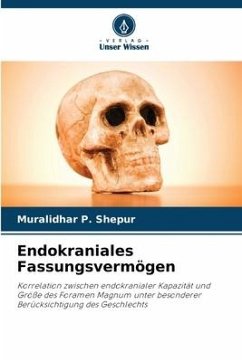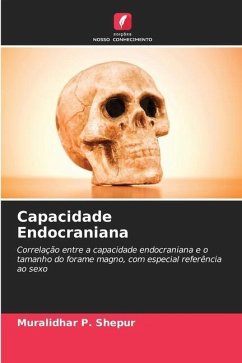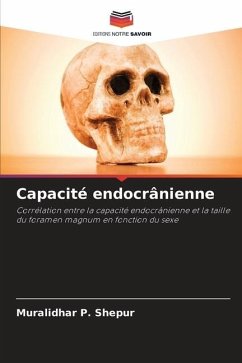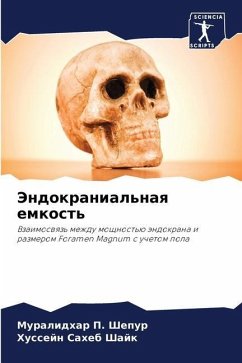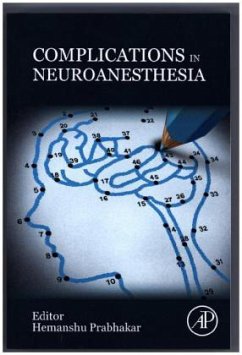
Endocranial Capacity
Correlation Between Endocranial Capacity and Size of Foramen Magnum With Special Reference to Sex
Versandkostenfrei!
Versandfertig in 6-10 Tagen
30,99 €
inkl. MwSt.

PAYBACK Punkte
15 °P sammeln!
Endocranial capacity is widely used as a proxy for actual brain size, one of the most important variable in the study of the human evolution, hence it is studied in fossil remains in order to draw the conclusions on the brain size of the early man. Endocranial capacity is an important parameter in the study of racial differences and in clinical practice for the study of the abnormalities of cranial size(indirectly the brain size). Medically, an analysis of cranial capacity exposes another aspect of the growth and development and permits critical evaluation of unusually large, small or misshape...
Endocranial capacity is widely used as a proxy for actual brain size, one of the most important variable in the study of the human evolution, hence it is studied in fossil remains in order to draw the conclusions on the brain size of the early man. Endocranial capacity is an important parameter in the study of racial differences and in clinical practice for the study of the abnormalities of cranial size(indirectly the brain size). Medically, an analysis of cranial capacity exposes another aspect of the growth and development and permits critical evaluation of unusually large, small or misshapen crania. Cranial capacity of the female is about 11% less than male, hence it can be used as parameter for sex determination. It can be correlated with other cranial parameters and in the studies of the primate phylogeny. The foramen magnum is a large opening in the base of skull, it is oval, wider behind with greatest diameter being antero-posterior. The dimensions of the foramen magnum are clinically important because vital structures passing through it may endure compression such as in cases of foramen magnum herniation,foramen magnum meningiomas and foramen magnum achondroplasia.







